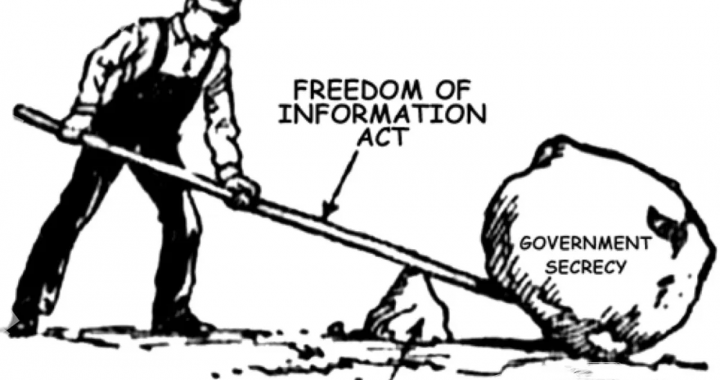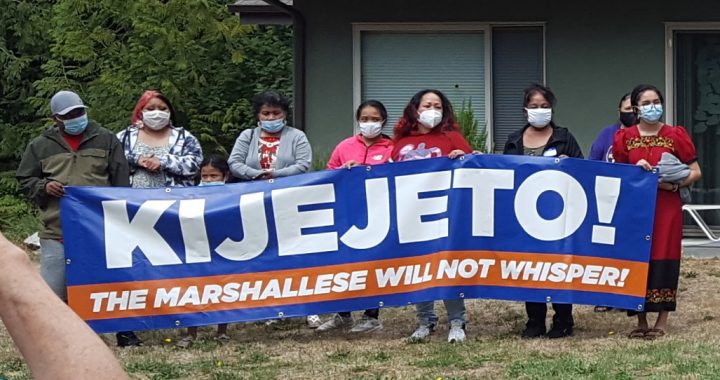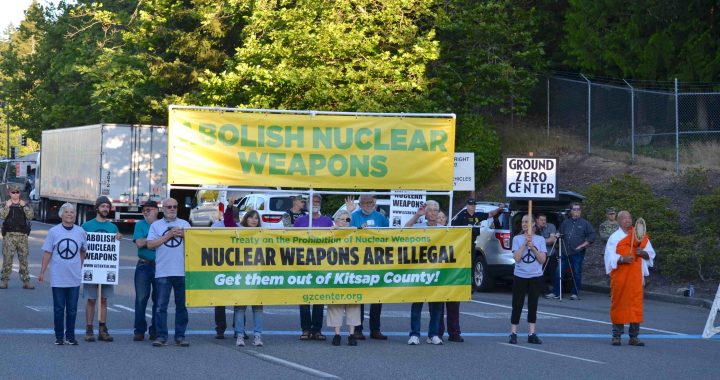Editor’s Note: This guest column by Ground Zero Center’s Glen Milner originally appeared in the Kitsap Sun newspaper on Sunday, July 19, 2021.
The purpose of the Freedom of Information Act (FOIA) is to ensure the public’s right to know what their government is doing and how its actions affect them. The law is based upon the principle that an informed citizenry is essential for a democratic society.
However, for the seventh year in a row, the Department of Defense (DOD) is attempting to insert regulations in the National Defense Authorization Act (NDAA) that would create unnecessary and overbroad secrecy provisions at odds with the purpose and goals of the FOIA.
The NDAA for 2022 was released by the House Armed Services Committee on June 15, 2021. Open government advocates are assailing the proposed legislation as an indefensible restriction on the FOIA.
Patrick J. Leahy, D-Vt., the most senior U.S. Senator and Chairman of the Appropriations Committee, told CQ Roll Call that he continues to oppose what he called an “anti-transparency” proposal.
“I’ve lost count how many times that the Defense Department has come to Congress with this overbroad proposal to shield vast amounts of Pentagon information from public disclosure through the Freedom of Information Act,” Senator Leahy said in a statement. “This version of DOD’s proposal contains the same fatal flaw as did previous ones: There are no clear limits on what kinds of information the Pentagon could hide from public view.”
Over the past 35 years, I have used the FOIA to learn about risks to Puget Sound communities due to U.S. Navy operations in the region.
In December 2003, I sent a FOIA request to Naval Magazine Indian Island, near Port Townsend, Washington, for records regarding potential impacts to the community from activities at the ammunition depot. Responsive records were withheld based upon a so-called “High 2” exemption—a FOIA exemption created through the courts that went far beyond the plain language of Exemption 2 to protect records “related solely to the internal personnel rules and practices of an agency.” The High 2 exemption was being used increasingly by federal agencies to withhold requested records because it could be applied to almost any record held by the federal government. In September 2006, I filed a FOIA lawsuit against the Navy in U.S. District Court in Seattle, Milner v. Navy.
On March 7, 2011, the U.S. Supreme Court ruled 8-1 against the Navy and issued an opinion regarding Milner v. Navy that overturned thirty years of established legal precedents pertaining to Exemption 2 of the FOIA and significantly narrowed the scope of that exemption. Justice Kagan delivered the opinion for the court and stated that the goal of the FOIA is for “broad disclosure” and that exemptions to the FOIA must be “given a narrow compass.”
In response to Milner v Navy, the DOD has repeatedly tried to undermine the FOIA to keep critical information from the public. In 2012, Congress passed a law that allowed the DOD to exclude certain infrastructure information, or “Critical Infrastructure Security Information.”
For each year since 2015, the DOD has attempted to insert additional provisions in the NDAA that would expand the DOD’s authority to restrict the release for certain unclassified military information.
Examples of records released through the FOIA, involving risk to the community resulting from U.S. Navy operations, show why further restrictions to the FOIA involving the military should not be enacted:
* A record dated January 25, 2012, released in August 2013, stated that Naval Base Kitsap-Bangor and Naval Submarine Base Kings Bay lacked sufficient land mass for safe explosives safety siting. The record stated, “The combined effect of siting the EHWs and Refit Complex (which is the Delta Pier at Bangor) would have required lengthening both submarine bases by approximately 1.3 miles. That degree of expansion was not available, when the bases were developed, and would be that much more difficult today, requiring large acquisitions and displacement of residences outside the current base boundaries.” The 2012 record explained that the problem with land mass will only get worse in the future, and stated, “This delta will only widen, as SSBN and SSGN platforms are replaced with new submarines that may be tasked with combined missions.”
* An April 12, 2018 record titled, Explosive Handling Wharf-2 (EHW-2), Strategic Weapons Facility Pacific, Safety Assessment Report, was released in redacted form in February 2020. The Navy’s safety assessment falsely stated, “an earthquake… that occurs in the Cascadia Subduction Zone, is not expected to have an impact on EHW-2 as the tsunami will be largely attenuated by the time it reaches the facility.” However, the opposite is true—a tsunami would gain significant strength in Hood Canal. According to recent Washington State Department of Natural Resources modeling, the explosives handling wharves at Naval Base Kitsap-Bangor and nearby piers could see waves in excess of 20 feet from a tsunami.
The National Defense Authorization Act, a massive authorization bill which has been marked up in secret in previous years, is not the proper vehicle to amend the FOIA.
Public disclosure of U.S. Navy operations that have the potential of harmful impacts is necessary for the protection of the Puget Sound region. Unfortunately, the Navy only works to keep these activities cloaked in secrecy.
*******
Glen Milner is an activist and a researcher with the Ground Zero Center for Nonviolent Action in Poulsbo, Washington.




